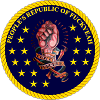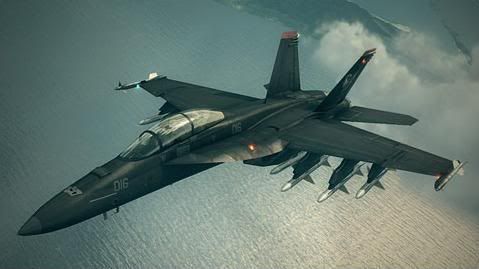Lesson 1:
Our aircraft are sufficient; and relying on F-22 and F-35 type strike aircraft is and remains a sound decision. However, more work needs to be done with the following:
Airborne Tankers. We are seriously deficient in these. The RAF recommends expansion to no less than 5, preferably 7, airborne tankers.
Strategic bomber forces: The RAF currently has none; and plans to fill this gap with drones are taking too long. THe RAF recommends either completing the drone program, or purchasing long-range bombers from the Red Technocracy.
Lesson 2:
Theatre Air Defenses are beyond inadequate, they are effectively non-existent. After careful consideration of the types of threats that face the Canissian homeland, it has been recommended that an integrated air-defense network be implimented that includes PATRIOT-style air defense missiles (or similar systems) and the construction of a major network of THEL, or Tactical High-Energy Laser, defense turrets.
THEL is recommended as the backbone of the program. The THEL is a high-energy laser weapon system that uses proven laser beam generation technologies, proven beam-pointing technologies, and existing sensors and communication networks to provide a new active defense capability in counter air missions. The goal of THEL is to provide a different solution than other systems or technologies for the acquisition and close-in engagement problems associated with short- to medium-range threats, thereby significantly enhancing coverage of combat forces and theater-level assets. The THEL's low cost-per-kill (about $3,000 per kill, as opposed to the $444,000 cost of a Rolling Airframe Missile) could also provide a cost-effective defense against low-cost air threats. It features up to 60 shots without reloading and if it meets design goals, a probability of kill of nearly 100% at a range of 5 km.

THEL, hooked into a fixed defense network with its own power grid, will be a major improvement in theater air-defense systems.
ROYAL CANISSIAN NAVY RECOMMENDATIONS BASED ON LESSONS LEARNED FROM THE UAR/NOVATERRAN WAR
Lesson 1:
Areleigh-Burke-class Destroyers need to be re-organized into three-ship, instead of two-ship, Divisions for deployment. Consideration should be given for whether we want to build more of these vessels, or replace them with a MESS-wide standardized replacement.
Lesson 2:
The Royal Navy feels that too much emphasis is placed on small craft for minor wars and littoral combat, to the neglect of readiness for fleet actions. The Anuket-class was intended to be a platform for numerous small ships to carry small clusters of TLAMS, however, the survivability of these ships in a large engagement is questionable. TLAMS are better served in larger ships using V-launch capability. The Anuket program should be terminated, and frigates and destroyers expanded (see below).
Lesson 3:
Frigate forces should be expanded, and a replacement for the Halifax should be found. Frigates should have stealth superstructures, V-launch tubes, and Aegis technology. Frigates should sub-clas into ASW and AAA specialized versions, and maximize their specialized roles.
Lesson 4:
The mine situation in the Neverhood makes Minesweepers a necessity; however, the proposed Type-332 Minesweepers are too specialized in their role. It is recommended that Frigates and Destroyers carry sufficient ROVs to carry out minesweeping details themselves, and some sort of multi-role combat ship be developed to serve as a minesweeper as well as provide small-ship support for littoral duties.
Lesson 4A: The possibility of adapting the Anuket class to serve as a littoral support vessel is worth consideration.















